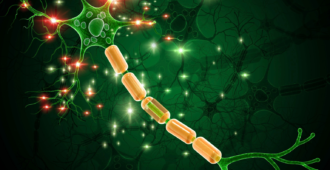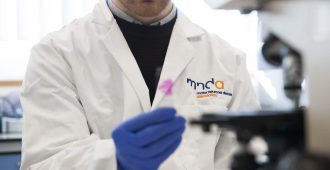Alternative treatments can be tempting if you have a disease like MND, for which conventional medicine can only offer one moderately effective drug. Unfortunately this temptation is easily preyed upon by clinics around the world that claim to be able to provide effective treatments or even a cure (at great expense of course), despite having no supporting evidence.
We often take enquiries from people with MND who are considering undertaking one of these ‘unproven’ treatments and want to know if we have more information about them. Often, all we can talk about is the lack of sound evidence that they work, so it can be helpful when a bit of hard evidence does come along – even if it’s suggesting that the treatment doesn’t work. This is the case with an article from the journal ‘Brian Pathology’, which crossed my desk recently.
Many people with MND have travelled to a clinic in Beijing to receive a type of stem cell treatment known as ‘olfactory ensheathing cell (OEC) transplantation’. This treatment is effectively experimental, having not undergone clinical trials, yet the Chinese clinic demands large sums of money from its patients and does not appear to follow their progress after treatment.
Independent neurologists who have tracked the progress of people with MND before and after treatment in China have failed to see any real improvement in their condition. Now, Italian scientists have presented in Brain Pathology some clues as to why this treatment isn’t working.
Two Italians with MND who had undergone the Chinese treatment generously donated their brains for use in research after they had passed away. This gave the scientists an opportunity to look at what had happened to the transplanted stem cells. They were able to see the tracks left by the needles used during the procedure and found that all of the tracks ended in different places, with none of them actually reaching the main motor neurone pathway from the brain to the spinal cord. The researchers did find some OECs, but they had been trapped within the needle tracks by the brain’s own defence mechanism – so the stem cells never got to where they were really needed. In addition there was no sign that the transplanted cells had produced any neurone-nourishing substances or turned into neurones or support cells – all mechanisms by which stem cells could potentially have some effect in MND. In light of all of this, it is not surprising that the researchers also found that brains showed all the typical hallmarks of MND degeneration and that their donors had experienced a typical progression of their disease.
This research may only have looked at the brains of two people with MND, but it all adds to the information we can give people who ask us about this treatment – and information means informed choice.





